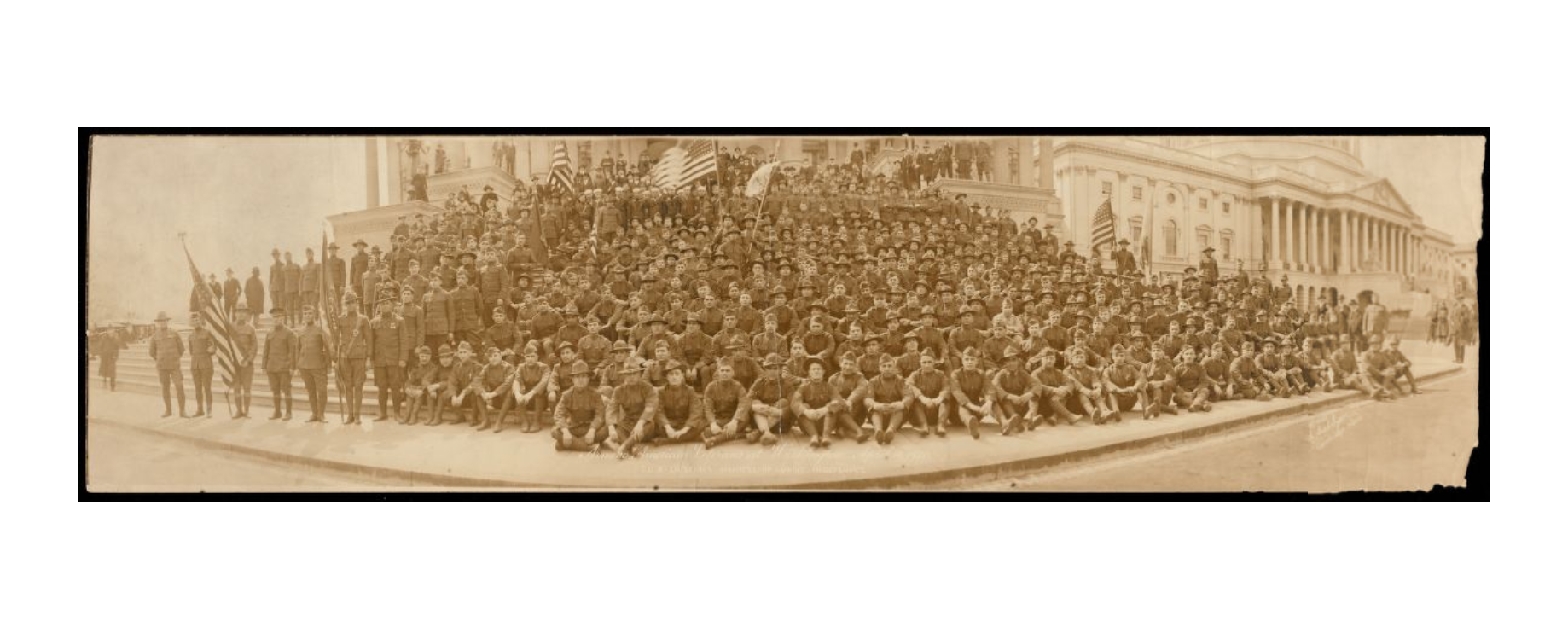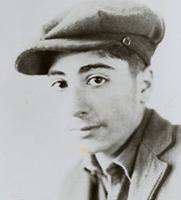|
Hairenik
''Hairenik'' ( meaning "fatherland") is an Armenian language weekly newspaper published by the Hairenik Association in Watertown, Massachusetts, United States. The newspaper belongs to the Armenian political party – Armenian Revolutionary Federation (ARF). The newspaper reflects the views and opinions of ARF as well as Armenian diaspora organizations – ANCAs ( Armenian National Committee of America). History The newspaper, serving the Armenian American community, was established as a weekly in on May 1, 1899, making it one of the longest-running Armenian publications. It moved to Boston, Massachusetts in 1900, then to Watertown in 1986. In June 1913, it started publishing once every two days, and in December 1915, it became a daily newspaper, with continuous publication as such until 1991, when it was reduced to weekly publication due to declining readership. It has had the involvement of prominent Armenian national figures as editors such as Arshak Vramian (1900&nd ... [...More Info...] [...Related Items...] OR: [Wikipedia] [Google] [Baidu] |
Hairenik Association
Hairenik Association (Hairenik Association Inc.) is a publishing house fully owned and operated by the Armenian Revolutionary Federation located in Watertown, Massachusetts, United States. Publications Its publications have included: *'' Hairenik'', a weekly (formerly daily) newspaper entirely in Armenian *'' Armenian Weekly'' (formerly Hairenik Weekly), an English-language newspaper *Hairenik Monthly and presently quarterly *''Armenian Review'', an English language periodical It also publishes many books, calendars and special commemorative publications Web Broadcasts Hairenik Association also runs a web radio and a web TV station. Hairenik Building Restoration Fund The Hairenik Building Restoration Fund is a campaign to raise money to upgrade and repair the Hairenik Building, the Watertown offices of the Hairenik Association. The Hairenik Association moved to its present location in 1986 following a long fundraising campaign to replace its aging headquarters on Stuart S ... [...More Info...] [...Related Items...] OR: [Wikipedia] [Google] [Baidu] |
Armenian Weekly
''The Armenian Weekly'' (originally ''Hairenik Weekly'') is an English Armenian publication published by Hairenik Association, Inc. in Watertown, Massachusetts in the United States. It is the sister publication to the Armenian language weekly '' Hairenik''. It was started as ''Hairenik Weekly'' in 1934 and its name was changed to ''The Armenian Weekly'', the name under which it is still published, in 1969. ''The Armenian Weekly'' also runs an online publication. The newspaper belongs to the Armenian political party – Armenian Revolutionary Federation (ARF). ''Hairenik Weekly'' (1934–1969) In June 1932, the Armenian-language '' Hairenik'' had started a column in English to address the needs of English-speaking Armenians. The response was so positive that by March 1934 the ''Hairenik Weekly'' was established entirely in English and began publication, mostly through the efforts of young volunteer contributors. In June 1934 ''Hairenik Weekly'' acquired a full-time editor, ... [...More Info...] [...Related Items...] OR: [Wikipedia] [Google] [Baidu] |
Arshak Vramian
Arshak or Arshag Vramian (, born Onnik Derdzakian; 22 March 1870/1871 – 17 April 1915) was an Armenian revolutionary and a leading member of the Armenian Revolutionary Federation. He worked as an ARF activist in his native Constantinople before fleeing the police. He worked for the party in Bulgaria and Romania before moving to Geneva, where he served on the party's Western Bureau and edited the party organ '' Droshak''. He lived in the United States from 1899 to 1907; while there, he edited the party newspaper ''Hairenik''. He returned to the Ottoman Empire after the Young Turk Revolution restored the Ottoman constitution. He was a member of the Ottoman parliament elected from Van Province. He was killed by the Ottoman authorities in April 1915 at the start of the Armenian genocide. Biography Arshak Vramian (born Onnik Derdzakian) was born on 22 March 1870 or 1871 in Constantinople. According to his United States naturalization record, his parents were originally from Persia, ... [...More Info...] [...Related Items...] OR: [Wikipedia] [Google] [Baidu] |
Watertown, Massachusetts
Watertown is a city in Middlesex County, Massachusetts, United States, part of Greater Boston. The population was 35,329 in the 2020 United States census, 2020 census. Its neighborhoods include Bemis, Coolidge Square, East Watertown, Watertown Square, and the West End. Watertown was one of the first Massachusetts Bay Colony settlements organized by Puritans, Puritan settlers in 1630. The city is home to the Perkins School for the Blind, the Armenian Library and Museum of America, and the historic Watertown Arsenal, which produced military armaments from 1816 through World War II. History Archeological evidence suggests that Watertown was inhabited for thousands of years before European colonization of the Americas, colonization. In the 1600s, two groups of Massachusett, the Pequossette and the Nonantum, had settlements on the banks of the river later called the Charles, and a contemporary source lists "Pigsgusset" as the native name of "Water towne." The Pequossette built a fi ... [...More Info...] [...Related Items...] OR: [Wikipedia] [Google] [Baidu] |
Armenian Revolutionary Federation
The Armenian Revolutionary Federation (, abbr. ARF (ՀՅԴ) or ARF-D), also known as Dashnaktsutyun (Armenians, Armenian: Դաշնակցություն, Literal translation, lit. "Federation"), is an Armenian nationalism, Armenian nationalist and Socialism, socialist political party founded in 1890 in Tbilisi, Tiflis, Russian Empire by Christapor Mikaelian, Stepan Zorian, and Simon Zavarian. , the party operates in Armenia, Lebanon, Iran and in countries where the Armenian diaspora is present. The party was also active in Artsakh Republic, Artsakh until the 2023 Azerbaijani offensive in Nagorno-Karabakh, Azerbaijani offensive in September 2023. Although it has long been the most influential political party in the Armenian diaspora, it has a comparatively smaller proportional presence in the Armenia, Republic of Armenia. , the party was represented in two national parliaments, with ten seats in the National Assembly of Armenia and three seats in the Parliament of Lebanon as part o ... [...More Info...] [...Related Items...] OR: [Wikipedia] [Google] [Baidu] |
Armenian-American Culture In Massachusetts
Armenian Americans () are citizens or residents of the United States who have total or partial Armenian ancestry. They form the second largest community of the Armenian diaspora after Armenians in Russia. The first major wave of Armenian immigration to the United States took place in the late 19th and early 20th centuries. Thousands of Armenians settled in the United States following the Hamidian massacres of the mid-1890s, the Adana massacre of 1909, and the Armenian genocide of 1915–1918 in the Ottoman Empire. Since the 1950s many Armenians from the Middle East (especially from Lebanon, Syria, Iran, Iraq, Egypt, and Turkey) migrated to the United States as a result of political instability in the region. It accelerated in the late 1980s and has continued after the dissolution of the Soviet Union in 1991 due to socio-economic and political reasons. The Los Angeles area has the largest Armenian population in the United States. The 2020 United States census reported that 5 ... [...More Info...] [...Related Items...] OR: [Wikipedia] [Google] [Baidu] |
The Armenian Review
''The Armenian Review'' is an academic journal that has been published in Watertown, Massachusetts, since 1948. It publishes articles on topics related to Armenia and Armenians Armenians (, ) are an ethnic group indigenous to the Armenian highlands of West Asia.Robert Hewsen, Hewsen, Robert H. "The Geography of Armenia" in ''The Armenian People From Ancient to Modern Times Volume I: The Dynastic Periods: From Antiq ..., and articles dealing with other themes and countries that use a comparative approach or help to comprehend the Armenian experience. At times Armenian Review was published on a quarterly basis, but it has been irregular and sporadic during most of the 1990s and early 2000s (decade). Since 2008 the Armenian Review has published 4 issues. It is currently published twice a year in May and in November. References External links * Armenian-American culture in Massachusetts Academic journals established in 1948 1948 establishments in Massachusetts ... [...More Info...] [...Related Items...] OR: [Wikipedia] [Google] [Baidu] |
Leon Tourian
Archbishop Leon Tourian (; 29 December 1879 – 24 December 1933) was a cleric of the Armenian Apostolic Church. Appointed primate (bishop), primate of the Eastern Diocese of the Armenian Apostolic Church of America in 1931, he was assassinated in New York City by Armenian Revolutionary Federation members. Tourian's murder was part of a conflict within the diaspora of the Armenian Apostolic Church in the United States and an example of cross-border sectarianism. Early ministry Tourian was born in Istanbul, Ottoman Empire. Tourian was archbishop of Smyrna, Vicar Patriarch of Constantinople, and later a prelate in Greece, Bulgaria, and, Armenian Archbishop of England. North American ministry Archbishop Tourian was appointed to head the Eastern Diocese of the Armenian Church in New York in 1931. The incident that resulted in a plot to assassinate the archbishop took place on 1 July 1933, in a pavilion for the celebration of Armenian Day at the Century of Progress Exposition in ... [...More Info...] [...Related Items...] OR: [Wikipedia] [Google] [Baidu] |
Simon Vratsian
Simon Vratsian (; 1882 – 21 May 1969) was an Armenian politician and activist of the Armenian Revolutionary Federation. He was one of the leaders of the First Republic of Armenia (1918–1920) and served as its last prime minister for 10 days in 1920. He also headed the Committee for the Salvation of the Fatherland for 40 days during the anti-Bolshevik February Uprising in 1921. While in exile, he continued his political and educational activities in the Armenian diaspora and wrote several books, most notably his six-volume memoir ''Keankʻi ughinerov'' ("On the Path of Life") and his history of the First Republic of Armenia titled ''Hayastani Hanrapetutʻiwn'' ("The Republic of Armenia"). Biography Vratsian was born Simavon Grouzian in the village of Metz Sala (Bolshiye Saly) near Nor Nakhichevan in the Russian Empire (now Nakhichevan-on-Don) on 5 April 1882 (March 24 by the Julian calendar). When he was five years old, his family settled among Cossacks in the Kuban regio ... [...More Info...] [...Related Items...] OR: [Wikipedia] [Google] [Baidu] |
Siamanto
Adom Yarjanian (), better known by his pen name Siamanto (; 15 August 1878 – August 1915), was an influential Armenian writer, poet and national figure from the late 19th century and early 20th century. He was killed by the Ottoman authorities during the Armenian genocide. Biography Adom Yarjanian was born in 1878 in Agn (modern-day Kemaliye, Turkey), a town on the shores of the river Euphrates. He lived in his native town until the age of 14. He studied at the Nersesian School as a youth, where he developed an interest in poetry. The school's director encouraged him to continue developing his poetic talents. The director, Garegin Srvandztiants, the noted folklorist and ethnographer, gave him the name Siamanto, after the hero of one of his stories. Yarjanian would use this name for the remainder of his life. Siamanto came from an upper-middle-class family. They moved to Constantinople (Istanbul) in 1891, where he continued his studies at the Berberian School, graduating ... [...More Info...] [...Related Items...] OR: [Wikipedia] [Google] [Baidu] |
William Saroyan
William Saroyan (; August 31, 1908 – May 18, 1981) was an Armenian-American novelist, playwright, and short story writer. He was awarded the Pulitzer Prize for Drama in 1940, and in 1943 won the Academy Award for Best Story for the film ''The Human Comedy''. When the studio rejected his original 240-page treatment, he turned it into a novel, '' The Human Comedy.'' Saroyan wrote extensively about the Armenian immigrant life in California. Many of his stories and plays are set in his native Fresno. Some of his best-known works are '' The Time of Your Life'', '' My Name Is Aram'' and '' My Heart's in the Highlands''. His two collections of short stories from the 1930s, ''Inhale Exhale'' (1936) and '' The Daring Young Man on the Flying Trapeze'' (1941), are regarded as among his major achievements and essential documents of the cultural history of the period on the American West Coast. He has been described in a Dickinson College news release as "one of the most prominent litera ... [...More Info...] [...Related Items...] OR: [Wikipedia] [Google] [Baidu] |






